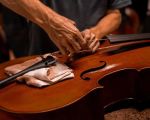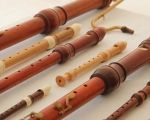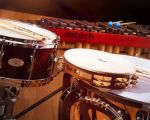- 1-How-to-Make-an-Easy-Musical-Instrument-at-Home-Overview
- 2-Materials-Needed-for-Home-Made-Instruments
- 3-Step-by-Step-Guide-to-Creating-Instruments
- 4-Creative-Ideas-and-Personal-Experiences
- 5-Benefits-of-Making-Instruments-at-Home
- 6-How-Beat-Trigger-Supports-Your-Musical-Journey
1. How to Make an Easy Musical Instrument at Home: A Practical Guide
Creating your own musical instrument at home can be a rewarding and fun experience, whether you're a beginner or an aspiring musician. The process of how to make an easy musical instrument at home opens doors to creativity, hands-on learning, and personal expression. This article explores practical steps and ideas to help you craft simple yet effective instruments using everyday materials.
From understanding what materials you’ll need, to step-by-step instructions and creative tips, this guide provides everything you need to start your musical crafting journey. Along the way, you’ll also discover real stories and insights that add depth and inspiration to your DIY project.
2. Essential Materials for Crafting Simple Instruments at Home
2.1 Common Household Items That Work Wonders
Most easy musical instruments can be made from items found around the house. Cardboard boxes, rubber bands, empty cans, plastic bottles, wooden spoons, and jars often become the foundation for your DIY instrument. The beauty of these materials is their accessibility and versatility.
2.2 Selecting Materials Based on Instrument Type
The kind of instrument you want to build influences the materials needed. For example, a string instrument like a homemade guitar might require a sturdy box and elastic bands, while percussion instruments can be crafted from cans filled with beans or rice to create shakers.
2.3 Tools to Have Ready
Basic tools such as scissors, glue, tape, and markers will help in assembling and decorating your instrument, making the process both functional and enjoyable.
3. Step-by-Step Guide to Creating Your Own Instrument
3.1 Building a Simple Rubber Band Guitar
Start with a small cardboard box. Stretch different thickness rubber bands around the box’s opening to mimic strings. Each band will produce a different tone depending on its tightness and thickness. Experiment by plucking the bands and adjusting tension to change pitch.
3.2 Making a Shaker Using Recycled Materials
Fill an empty plastic bottle or can with dried beans, rice, or small beads. Secure the lid tightly and decorate the exterior. When shaken, the contents create rhythmic percussion sounds perfect for beginners learning about beats and timing.
3.3 Crafting a Drum from Household Items
Use an empty container like a coffee can or large jar. Stretch a balloon or rubber glove over the opening to create a drumhead. Secure it with a rubber band and tap gently to explore different rhythms and sounds.
4. Creative Ideas and Real-Life Stories to Inspire Your Instrument Making
4.1 Personal Story: From Scrap to Sound
A friend once transformed an old cereal box and rubber bands into a miniature guitar that her children loved playing. The process sparked their interest in music and encouraged them to experiment with different sounds, showing how simple projects can have a big impact on family creativity.
4.2 Popular Online Challenges
Recently, social media trends have popularized challenges where participants create musical instruments from recycled materials. These events highlight how accessible music-making can be and encourage environmental awareness.
4.3 Experimentation and Customization
Don't hesitate to personalize your instruments. Painting, adding stickers, or combining materials can make each creation unique and more meaningful.
5. Why Making Instruments at Home Is Beneficial Beyond Music
5.1 Encourages Creativity and Problem-Solving
Crafting instruments involves critical thinking and innovation. You learn how materials interact to produce sound, which can deepen your appreciation of music and science alike.
5.2 Enhances Motor Skills and Patience
The hands-on nature of instrument-making improves coordination and fine motor skills, especially valuable for children and beginners.
5.3 Builds Confidence and Connection
Playing an instrument you built yourself boosts confidence and offers a unique connection to music. It also provides an engaging activity for families or communities to bond over.
6. How Beat Trigger Can Help You Explore Music Further
Once you’ve created your easy musical instrument at home, you might want to explore more advanced gear or learn new techniques. Beat Trigger offers a wide range of musical products and resources tailored to all skill levels, helping you develop your musical talent further. Whether you're looking for accessories, tutorials, or inspiration, Beat Trigger connects you to the best options suited for your musical journey.
By combining DIY creativity with expert support, you can expand your music-making horizons with confidence and excitement.








